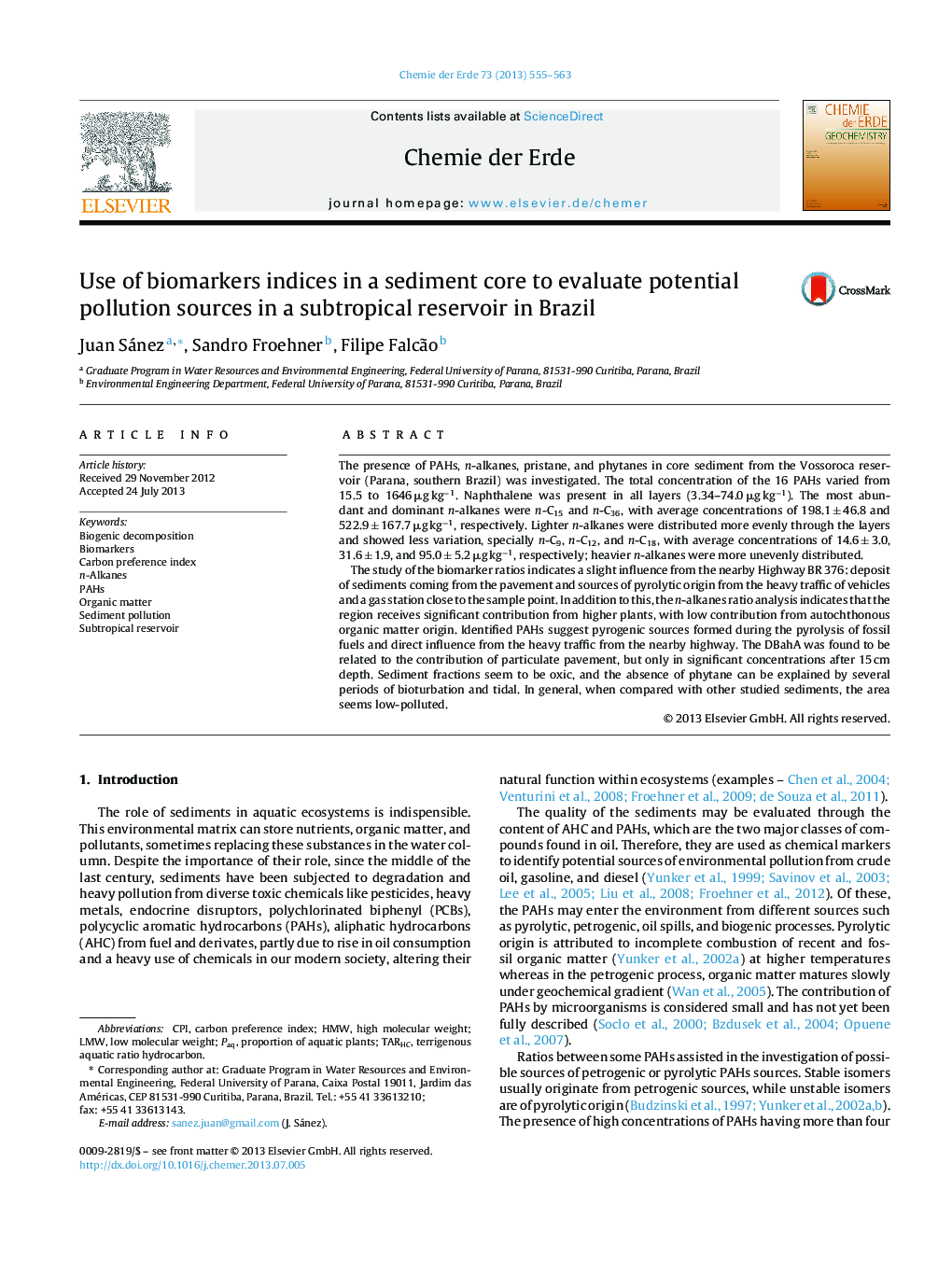| کد مقاله | کد نشریه | سال انتشار | مقاله انگلیسی | نسخه تمام متن |
|---|---|---|---|---|
| 4406990 | 1307336 | 2013 | 9 صفحه PDF | دانلود رایگان |

• The content of PAHs and n-alkanes in a core in the Vossoroca reservoir were studied.
• The content of PAHs and n-alkanes were slightly influenced by the proximity to a road and a gas station.
• The sediments in the Vossoroca reservoir could be considered to be relatively non-polluted.
The presence of PAHs, n-alkanes, pristane, and phytanes in core sediment from the Vossoroca reservoir (Parana, southern Brazil) was investigated. The total concentration of the 16 PAHs varied from 15.5 to 1646 μg kg−1. Naphthalene was present in all layers (3.34–74.0 μg kg−1). The most abundant and dominant n-alkanes were n-C15 and n-C36, with average concentrations of 198.1 ± 46.8 and 522.9 ± 167.7 μg kg−1, respectively. Lighter n-alkanes were distributed more evenly through the layers and showed less variation, specially n-C9, n-C12, and n-C18, with average concentrations of 14.6 ± 3.0, 31.6 ± 1.9, and 95.0 ± 5.2 μg kg−1, respectively; heavier n-alkanes were more unevenly distributed.The study of the biomarker ratios indicates a slight influence from the nearby Highway BR 376: deposit of sediments coming from the pavement and sources of pyrolytic origin from the heavy traffic of vehicles and a gas station close to the sample point. In addition to this, the n-alkanes ratio analysis indicates that the region receives significant contribution from higher plants, with low contribution from autochthonous organic matter origin. Identified PAHs suggest pyrogenic sources formed during the pyrolysis of fossil fuels and direct influence from the heavy traffic from the nearby highway. The DBahA was found to be related to the contribution of particulate pavement, but only in significant concentrations after 15 cm depth. Sediment fractions seem to be oxic, and the absence of phytane can be explained by several periods of bioturbation and tidal. In general, when compared with other studied sediments, the area seems low-polluted.
Journal: Chemie der Erde - Geochemistry - Volume 73, Issue 4, December 2013, Pages 555–563